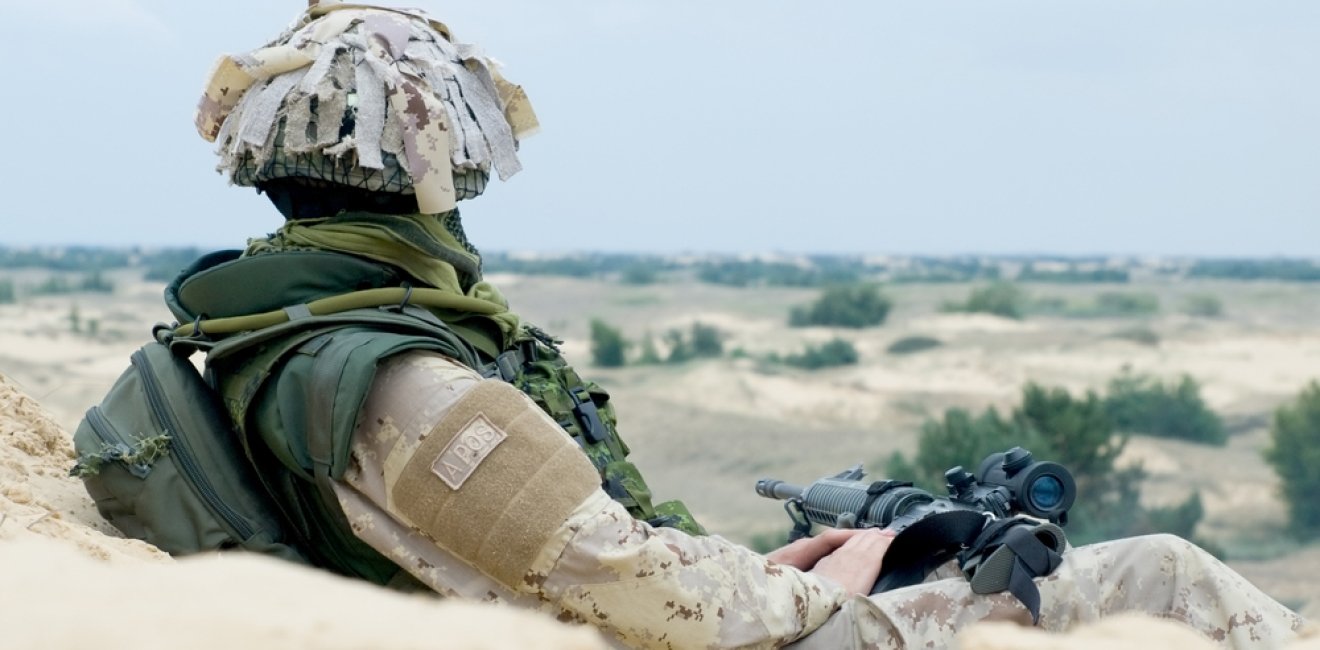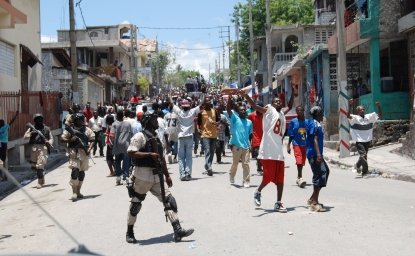Afghanistan has suffered through a harrowing summer, even by the nightmarish standards of a country convulsed by conflict for decades.
On May 31, a truck bomb exploded in Kabul’s heavily fortified diplomatic enclave, killing more than 150 people. On June 2, Afghans, furious about their government’s failure to provide security, took to the streets of Kabul. Security forces cracked down, killing at least five people. One of them was the son of the deputy leader of Afghanistan’s Senate. His funeral the next day, attended by top Afghan political leaders, was rocked by three explosions that killed at least twenty people.
This merciless cycle of violence continued unabated. Two bomb blasts at Shia Muslim mosques, one in Herat on June 6 and the other in Kabul on June 15, killed seven and four people, respectively. On June 18, an assault on a police station in eastern Afghanistan killed five officers. On June 20, eight Afghan guards employed at Bagram, the largest U.S. military base in Afghanistan, were gunned down in an ambush as they headed to the base to work a night shift. And on June 22, a car bomb outside a bank in Helmand Province claimed at least thirty lives.
That’s at least 229 dead in just twenty-three days.
Against this bloody backdrop, the Trump administration plans to send several thousand more soldiers to Afghanistan—even as it continues to flesh out a broader strategy.
The decision to put more boots on the ground has made headlines, but the still-evolving strategy is far more consequential. Indeed, if the United States is to help arrest Afghanistan’s spiraling destabilization, it’ll need much more than troops to do so. And yet, what’s known about the emerging strategy so far inspires little confidence that the Trump administration will have any more success than its predecessor.
Make no mistake: A mini-surge will do little to rein in Afghanistan’s recent orgy of violence, much less tame the Taliban insurgency. More than one hundred thousand American troops couldn’t do the trick during the height of the surge in 2010 and 2011, so you can bet your bottom dollar that dispatching a few thousand troops to reinforce the current 8,500 won’t either—even with the improvements in Afghan warfighting capacities in recent years.
Ramping up the U.S. military presence means more risks to American lives, both on the battlefield and in the barracks. This year, there’s been a spike in insider attacks—cases of Afghan troops turning their guns on their American trainers, typically because of Taliban infiltration or cultural misunderstandings. Over the last few months, three such incidents—including two in June—killed six U.S. troops. This problem isn’t as serious as it used to be; in 2012, nearly forty attacks killed more than fifty coalition troops. Still, it’s disturbing that such attacks continue despite U.S. efforts to improve screening of Afghan military recruits and to enhance American troops’ cultural understanding.
This isn’t to say we should reflexively dismiss the utility of a modest troop increase. On the contrary, more soldiers can enhance a U.S. training mission that’s in need of a boost. As Secretary of Defense James Mattis noted in recent Congressional testimony, more troops mean more U.S. advisers to accompany Afghan forces in the field, where guidance is badly needed.
More U.S. troops can also intensify efforts to boost Afghan intelligence-collection capacities—a major deficiency, as evidenced by the many intelligence failures of recent months. The May 31 attack was just the latest in a series of blasts to detonate in supposedly secure areas of the besieged capital. On May 3, a suicide bomber targeted a NATO convoy near the U.S. embassy. Strengthening such capacities would also enable Afghans to better screen their military recruits, thereby reducing the risk of militant infiltration and decreasing the possibility of insider attacks.
Still, a troop increase is no substitute for a broader strategy. A particularly strong need of the hour is a plan to guide U.S. engagement with Afghanistan’s national unity government (NUG)—an oft-overlooked driver of instability. It is a dysfunctional mess, thanks in great part to disputes between its two power-sharing rivals, President Ashraf Ghani and Chief Executive Officer Abdullah Abdullah.
This fragile government’s vulnerability is intensifying. Since the May 31 bombing, protesters in Kabul have regularly—sometimes as often as ten times a day—taken to the streets and demanded Ghani’s resignation. They vowed to intensify their movement after security forces shut down their tent sites on June 20. At least six protesters have died in recent weeks—the deadliest such crackdown on dissent since the Taliban’s ouster in 2001.
Ominously, dissension within the government’s ranks has intensified as well, which risks upsetting the NUG’s uneasy ethnic balance (Ghani is Pashtun, while Abdullah is half-Tajik and draws much of his support from Tajiks) and raises questions about its very survival. Extraordinarily, the government’s own foreign minister, Salahuddin Rabbani, the leader of the Tajik-dominated Jamaat-e-Islami (JI) party, suggested that elements of the government were behind the funeral blasts and warned that JI would call for a new administration if all security ministers weren’t fired. Atta Muhammad Noor, a key Afghan political broker who is a top JI leader and the governor of Balkh Province, made similar accusations. In response, Gulbuddin Hekmatyar, a notorious Pashtun warlord who recently inked a peace deal with Kabul and is a bitter rival of both Abdullah and JI, warned that no one should think about overthrowing the government.
Undeterred, on June 25, Noor threatened mass protests and “dangerous civil movements” if the government fails to undertake security reforms. Sure enough, several days later, three major political parties—including JI, led by Noor and Rabbani—announced the formation of a new movement called the Coalition to Rescue Afghanistan. They insist it is meant to demand urgent reforms, not to plot the government’s ouster.
Amid this turmoil, the government has struggled to provide basic services to its impoverished population—no small matter in a nation in economic free fall. Annual GDP growth plummeted from more than 14 percent in 2012 to just 1.5 percent in 2015—a dramatic fall attributable to the drawdown of foreign combat troops in 2014, which deprived Afghanistan of its flourishing war economy. In 2016, one estimate concluded that the contraction of the war economy led to two hundred thousand lost jobs.
Meanwhile, Afghanistan still ranks as one of the most corrupt countries in the world, according to Transparency International. Tellingly, in some cases, those charged with combating corruption—including a top general in Helmand—have instead been accused of committing it. Despite Ghani’s genuine desire to curb corruption, and despite some success stories, including the establishment of a new anti-corruption court, the scourge continues to pervade the government.
This misgovernance is a glorious gift to the insurgency. The government’s ineffectiveness strengthens the hand of the Taliban, which, with its promises of swift justice and regular paychecks, casts itself as a better alternative to a corrupt and feckless government (one that street protestors, like the Taliban, are labeling as “illegitimate”). A weak government can help Taliban recruitment, strengthen the insurgency, and accelerate Afghanistan’s destabilization.
These governance-related drivers of instability simply can’t be ignored.
To their credit, U.S. officials have suggested the troop increase will be tied to a broader strategic objective: compelling the Taliban to join a peace process with the Afghan government. But this is folly. A hundred thousand troops couldn’t bring the Taliban to the negotiating table. Why should less than fifteen thousand?
U.S. military forces would have a better chance of driving the Taliban to the negotiating table if insurgents were hit where it hurts the most—their leaders’ sanctuaries in Pakistan. U.S. policy could well go in this direction. In his Congressional testimony, Mattis said the administration will take a regional approach and address “where this enemy is fighting from . . . which is not just Afghanistan.”
A senior administration official told Bloomberg that one component of the Afghanistan strategy could involve attempting to convince Pakistan that its interests are better served by partnering with, rather than working against, America in Afghanistan—meaning that Pakistan should crack down on the Taliban and Haqqani Network presence on its soil.
Washington, however, has tried and failed to elicit this outcome for years. There’s no reason to think it’ll be any more successful this time around; Pakistan won’t want to turn on assets that keep India—which Pakistan considers an existential threat—at bay in Afghanistan. For Pakistan, maintaining ties to the Taliban and Haqqani Network is, arguably, an immutable national interest.
This raises the possibility, already hinted at by U.S. officials, that Washington could eventually take matters into its own hands and expand the drone war beyond Pakistan’s tribal areas, where the vast majority of known strikes have taken place, in order to target senior Taliban and Haqqani Network figures elsewhere in the country. The Obama administration already set a precedent in May 2016 when it smoked out Taliban supreme leader Mullah Mansour in Baluchistan, where the Taliban leadership is headquartered. A possible coming attraction from the Trump administration may have been screened on June 13, when a drone strike reportedly killed a Haqqani Network commander in Khyber-Pakhtunkhwa Province.
The White House may hope that targeting the Taliban in its safest space could scare it into joining peace talks. This hope, however, might be misplaced. Hits on the Taliban leadership could embolden, not enfeeble, the organization and prompt it to step up its fight on the battlefield.
Also, if the group’s leadership feels sufficiently vulnerable in its Pakistani sanctuary, it could simply relocate—perhaps to Iran, a nation that’s provided support to the Taliban over the years. Like Pakistan, Iran has played a double game in Afghanistan—it has cooperated with Kabul while also colluding with the Taliban. When Mansour was killed in Baluchistan, he was returning from a trip to Iran. Given the toxic relationship between Tehran and Washington today, Iran may well be willing to serve as host—as risky as such a move would be.
In effect, when it comes to using force to get the Taliban to sue for peace, success is far from assured. And yet, a diplomatic track doesn’t appear any more viable, in great part because the Taliban’s battlefield gains give it little incentive to stop fighting—no matter how much Kabul, Washington, Beijing or other key state actors may try to convince the Taliban otherwise. Additionally, the State Department, which would presumably lead a reconciliation strategy, has been marginalized by a Pentagon ensconced in the driver’s seat of Afghanistan policy, thanks to Trump’s decision to delegate authority for troop-level decisions to Mattis. Tellingly, reports have emerged that the State Department’s Office of the Special Representative for Afghanistan and Pakistan could be eliminated.
Administration officials may counter that their new strategy will ensure plenty of time to think this all through and eventually get things right, because it will emphasize an open-ended, long-term military deployment in Afghanistan. Unlike Obama’s policy, there will be no timeframes or deadlines.
And yet, the basic parameters of the emerging new plan—building up Afghan security forces, enlisting Pakistan’s support to eliminate Taliban sanctuaries, coaxing the Taliban to the negotiating table—reflect the same elusive goals in place for the last sixteen years. The Trump administration’s open-ended commitment to Afghanistan effectively buys America more time to keep making the same mistakes. The strategy risks being little more than old wine in new bottles.
This isn’t to suggest it’s time to throw in the towel. On the contrary, America should go all-in on Afghanistan, and with a four-pronged strategy. First, provide military support—not just more troops for the training mission, but also a beefed-up counterterrorism mission to help preempt the greatest threat to U.S. interests: terrorists exploiting lawlessness, insecurity and Taliban-controlled territory to use Afghan soil to plot an attack on the United States. Second, appoint an assistant secretary of state for South and Central Asian affairs and an ambassador to Afghanistan (both positions are vacant, as a delegation of U.S. senators lamented on a July 4 visit to Kabul). Empower the former with overseeing the diplomatic components of the strategy and task the latter with meeting regularly with NUG officials to help mediate disputes. Third, oversee an exhaustive effort to probe the possibilities of a Taliban reconciliation process, no matter how remote such a prospect may be. Fourth, help stimulate Afghanistan’s sputtering economy, particularly by increasing investments in an underrated private sector. Afghanistan’s telecom industry, for example, is an unabashed success story and was the country’s largest private employer until higher taxes imposed by Kabul began slowing its growth last year.
Why embrace such a comprehensive strategy—especially given that it includes goals that have fallen short in the past? Because if it fails, it bolsters the rationale for a potential U.S. withdrawal down the road. If you can say you tried your level best but couldn’t win the war, and if you can say you tried your level best but couldn’t negotiate an end to the war, then it’s easier to walk away.
The conventional wisdom inside the Beltway is that a withdrawal would be a complete disaster. This may be true. Then again, the balance sheet on America’s continued presence is perilously close to disastrous. After nearly two decades of war, hundreds of billions of dollars spent—including $4 million an hour—and nearly 2,500 American lives lost (as well as nearly thirty-five thousand Afghan civilian lives lost), the Taliban insurgency has never been more ferocious. For Trump, who pledged as a presidential candidate to extricate America from its foreign entanglements, an extended commitment could also become a political liability.
This much is true: Crafting an effective Afghanistan strategy to accompany the troop increase has never been more important—or challenging.
Opinions expressed here are solely those of the author.
This article was originally published in The National Interest.
Author


Indo-Pacific Program
The Indo-Pacific Program promotes policy debate and intellectual discussions on US interests in the Asia-Pacific as well as political, economic, security, and social issues relating to the world’s most populous and economically dynamic region. Read more

Explore More
Browse Insights & Analysis
Iraq Should Consider Extending UNAMI’s Mission



